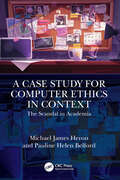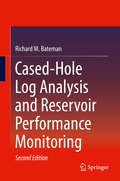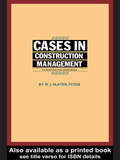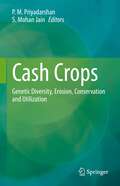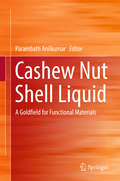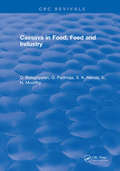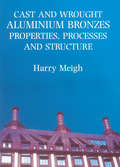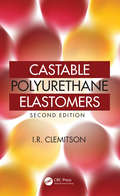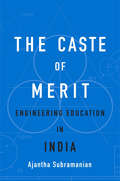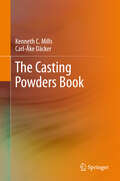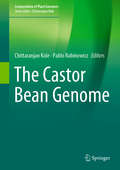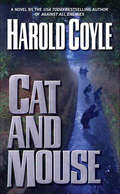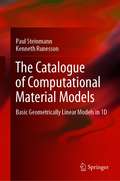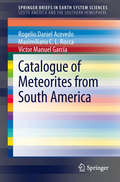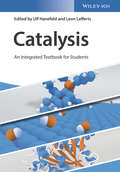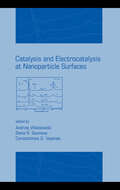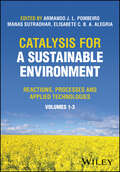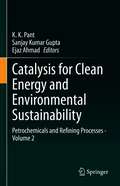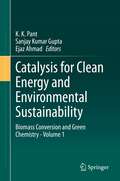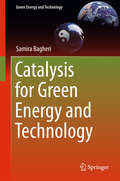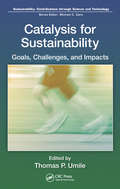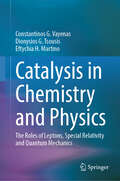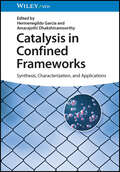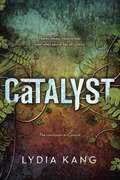- Table View
- List View
A Case Study for Computer Ethics in Context: The Scandal in Academia
by Michael James Heron Pauline Helen BelfordAimed at addressing the difficulties associated with teaching often abstract elements of technical ethics, this book is an extended fictional case study into the complexities of technology and social structures in complex organizations. Within this case study, an accidental discovery reveals that the algorithms of Professor John Blackbriar are not quite what they were purported to be. Over the course of 14 newspaper articles, a nebula of professional malpractice and ethical compromise is revealed, ultimately destroying the career of a prominent, successful academic.The case study touches on many topics relevant to ethics and professional conduct in computer science, and on the social structures within which computer science functions. Themes range from the growing influence of generative AI to the difficulties in explaining complex technical processes to a general audience, also touching on the environmental consequences of blockchain technology and the disproportionate gender impacts of Coronavirus. Each new revelation in the case study unveils further layers of complexity and compromise, leading to new technical and social issues that need to be addressed.Directly aimed at making ethics in the digital age accessible through the use of real-world examples, this book appeals to computer science students at all levels of the educational system, as well as making an excellent accompaniment to lecturers and course convenors alike.
Cased-Hole Log Analysis and Reservoir Performance Monitoring
by Richard M. BatemanThis book addresses vital issues, such as the evaluation of shale gas reservoirs and their production. Topics include the cased-hole logging environment, reservoir fluid properties; flow regimes; temperature, noise, cement bond, and pulsed neutron logging; and casing inspection. Production logging charts and tables are included in the appendices. The work serves as a comprehensive reference for production engineers with upstream E&P companies, well logging service company employees, university students, and petroleum industry training professionals.
Cases in Construction Management
by W.J. SlaterWritten by the country's leading authority on construction management training, this book gives practical examples of construction management problems and how to deal with them.
Cash Crops: Genetic Diversity, Erosion, Conservation and Utilization
by P. M. Priyadarshan S. Mohan JainCash crops are grown and sold for monetary gain and not necessarily for sustenance. They include coffee, tea, coconut, cotton, jute, groundnut, castor, linseed, cocoa, rubber, cassava, soybean, sweet potato, potato, wheat, corn and teff. While some of these crops have been improved for realizing yield potential, breeding of many of them is still in infancy. Crops that underwent rigorous breeding have eventually lost much of the diversity due to extensive cultivation with a few improved varieties and the diversity in less bred species is to be conserved. Over the past years, scholars and policy makers have become increasingly aware of the short and long-run impact of climatic factors on economic, food security, social and political outcomes . Genetic diversity, natural and induced, is much needed for the future generations to sustain food production with more climate resilient crops. In contrast, crop uniformity produced across the farm fields in the form of improved varieties is genetically vulnerable to biotic and abiotic stresses. Thus, it is essential and challenging to address the issue of compromising between maximizing crop yield under a given set of conditions and minimizing the risk of crop failure when conditions change. Cash crops are grown in an array of climatic conditions. Many of the world’s poor still live in rural areas. Many are subsistence farmers, operating very small farms using very little agricultural inputs for achieving marketable outputs. Conserving the diversity of these crops and addressing all issues of crop culture through modern tools of biotechnology and genomics is a real challenge. We believe the focus of this book is to fill an unmet need of this and other grower communities by providing the necessary knowledge, albeit indirectly via the academics, to manage the risks of cash crops breeding through managing genetic diversity.
Cashew Nut Shell Liquid: A Goldfield for Functional Materials
by Parambath AnilkumarThis book highlights and reviews the renewable feed stock principle of green nanotechnology by focusing the use of plant-derived cardanol as a renewable starting material for the synthesis of advanced materials. The book presents the chemistry of cardanol and methods of isolation, covers macro and nano structures based on cardanol as well as potential applications of such materials. Future perspectives on cardanol based green nanotechnology are highlighted in the final chapter.
Cassava in Food, Feed and Industry
by C. BalagopalanCassava (Manihot esculenta Crantz) is the staple food of more than 300 million people in the world. Though cassava is utilized in a variety of ways, scientific books of any category written on the postharvest aspects of cassava are relatively few. The effect of this paucity was strikingly felt during recent years. This was one of the impelling reasons behind the present venture which, it is hoped, will stimulate other publications on this neglected crop.
Cassette Culture: Popular Music And Technology In North India (Chicago Studies In Ethnomusicology Ser.)
by Peter ManuelIn Cassette Culture, Peter Manuel tells how a new mass medium—the portable cassette player—caused a major upheaval in popular culture in the world's second-largest country. The advent of cassette technology in the 1980s transformed India's popular music industry from the virtual monopoly of a single multinational LP manufacturer to a free-for-all among hundreds of local cassette producers. The result was a revolution in the quantity, quality, and variety of Indian popular music and its patterns of dissemination and consumption. <p><p> Manuel shows that the cassette revolution, however, has brought new contradictions and problems to Indian culture. While inexpensive cassettes revitalized local subcultures and community values throughout the subcontinent, they were also a vehicle for regional and political factionalism, new forms of commercial vulgarity, and, disturbingly, the most provocative sorts of hate-mongering and religious chauvinism. <p><p> Cassette Culture is the first scholarly account of Indian popular music and the first case study of a technological revolution now occurring throughout the world. It will be an essential resource for anyone interested in modern India, communications theory, world popular music, or contemporary global culture.
Cast and Wrought Aluminium Bronzes: Properties, Processes and Structure
by Harry MeighContinuous casting of non-ferrous metals has been practised for well over 100 years. It has many advantages over static ingot and book mould casting, the most important being improved yield, reduced energy consumption and reduction of manpower, with a consequent reduction in cost. This book shows how the prrocess can be used in an engineering environment for casting a wide range of copper based alloys and precious metals, including gold and silver, and selected nickel alloys.
Castable Polyurethane Elastomers
by I.R. ClemitsonThis second edition of a bestseller is a practical guide to the production of castable polyurethane articles. The book shows the progression from raw materials to prepolymer production, including the chemistry and functionality of the processes. It provides a comprehensive look at various problem-solving and processing techniques, examining the selection of different systems on both the micro and macro levels. Reorganized for better flow, this edition describes new processing methods, expands coverage of health and safety aspects, and brings all standards up to date.
The Caste of Merit: Engineering Education in India
by Ajantha SubramanianJust as Americans least disadvantaged by racism are most likely to call their country post‐racial, Indians who have benefited from upper-caste affiliation rush to declare their country a post‐caste meritocracy. Ajantha Subramanian challenges this belief, showing how the ideal of meritocracy serves the reproduction of inequality in Indian education.
The Casting Powders Book
by Carl-Åke Däcker Kenneth C. MillsThis book deals with casting powders and explains how they work and how they are best used to minimise defects in the ninety per-cent of world steel production that is continuously cast. The factors affecting various aspects of powder performance are described and different defects, their causes, and means of avoiding them are considered. Providing the first comprehensive coverage of mould powder properties and uses, the text treats theoretical and practical matters and gives direct advice on problem solving. Drawing on a wealth of scientific and technological research, represented by its extensive references, The Casting Powders Book shows readers how they can design and create mould powders optimised to fulfill the necessary functions of: lubrication of steel shells and reduction of shell-mould friction; absorption of inclusions floating up from the steel; chemical insulation of steel from carbon-rich mould powder; and protection of the steel meniscus from oxidation and thermal insulation to prevent surface freezing. Thermophysical properties and heat-transfer processes are also given detailed attention and case studies illustrate the methods and materials described. The Casting Powders Book is designed to be a periodic reference that can be dipped into as the need arises. Readers from different backgrounds are well-served by the depth and variety of content: engineers trouble-shooting a continuous-casting process interested in how mould fluxes can minimise defects and process problems and how their performance is in turn affected by casting parameters; academic scientists interested in the the theoretical aspects and properties of mould fluxes and slag films; or engineers working with ingot casting processes; and many others will find this book an invaluable resource.
The Castor Bean Genome (Compendium of Plant Genomes)
by Chittaranjan Kole Pablo RabinowiczThis book addresses various aspects of the current castor bean research, including genetics, biotechnology, comparative genomics, and more specific topics such as oil metabolism and the ricin toxin. It also presents the whole genome sequencing of the castor bean and its impact on the mining of gene families and future plant breeding. Castor bean (Ricinus communis), an oilseed plant, belongs to the Euphorbiaceae (spurge) family. It is a tropical and subtropical crop valued for the high quality and uniform nature of its oil, which is mostly composed of the uncommon fatty acid ricinoleate. Castor bean oil has important industrial applications for the production of lubricants, cosmetics, medicines, and specialty chemicals, and castor bean has also been proposed as a biodiesel crop that does not pose concerns regarding the “food versus fuel” debate. However, it accumulates the type 2 ribosome-inactivating protein ricin in its seeds, and health concerns posed by ricin’s high toxicity have prevented broader cultivation. Recently, there has been renewed interest in castor bean due to potential biosecurity issues.
Cat and Mouse: A Novel (Nathan Dixon #5)
by Harold CoyleNew York Times–bestselling author Harold Coyle's Cat and Mouse reveals the chaos of warfare as Islamic terrorists, lead by their most charismatic leader to date, form a powerful coalition in hopes of breaking America's will to continue the war on terror. In the War on Terror, it is often difficult to tell who the enemy is. Sometimes your fiercest opponent isn't an insurgent or a fanatic bent on making a statement in blood, but a chain of command that is pursuing goals and objectives that have nothing to do with your unit's stated mission. Nathan Dixon finds out just how true this is when a new battalion commander, Lieutenant Colonel Robert Delmont, convinces his superiors that he has an all but foolproof plan for defeating Islamic terrorists in the Philippines—a plan that will ensure Delmont's promotion to full colonel and beyond. But the 3rd Regiment of the 75th Ranger battalion is pitted against no fool. Determined to create a fundamental Islamic state in Southeast Asia, a charismatic terrorist by the name of Hamdani Summirat unites the various Islamic factions into a confederation. Their aim is to drag the United States into a protracted war of attrition that the Americans cannot win. Summirat's factions play out a deadly game of cat and mouse, drawing the American forces into ambushes and small, bloody encounters with a small but highly trained core of Islamic fighters. Lieutenant General Scott Dixon, Deputy Chief of Staff for Operations with the US Army--and Nathan's father—soon finds that these enemies are practically impossible to hunt down. They are killing American troops almost at will. He realizes quickly that if the mission continues, many more Americans will be wounded or killed-- perhaps even his own son. But his pleas to his Commander-in-Chief are practically ignored. This dual game of cat and mouse is played out both in the jungles of Mindanae and in the forward operations base. Nathan Dixon must deal with a battalion commander who is determined to see his plan through, regardless of the price Nathan and his company must pay, while Scott Dixon must deal with a chain of command that refuses to alter a plan of attack in the face of a losing effort.
The Catalogue of Computational Material Models: Basic Geometrically Linear Models in 1D
by Paul Steinmann Kenneth RunessonThis book gives a comprehensive account of the formulation and computational treatment of basic geometrically linear models in 1D. To set the stage, it assembles some preliminaries regarding necessary modelling, computational and mathematical tools. Thereafter, the remaining parts are concerned with the actual catalogue of computational material models. To this end, after starting out with elasticity as a reference, further 15 different basic variants of material models (5 x each of {visco-elasticity, plasticity, visco-plasticity}, respectively) are systematically explored. The presentation for each of these basic material models is a stand-alone account and follows in each case the same structure. On the one hand, this allows, in the true sense of a catalogue, to consult each of the basic material models separately without the need to refer to other basic material models. On the other hand, even though this somewhat repetitious concept may seem tedious, it allows to compare the formulation and resulting algorithmic setting of the various basic material models and thereby to uncover, in detail, similarities and differences. In particular, the response of each basic material model is analysed for the identical histories (Zig-Zag, Sine, Ramp) of prescribed strain and stress so as to clearly showcase and to contrast to each other the characteristics of the various modelling options.
Catalogue of Meteorites from South America (SpringerBriefs in Earth System Sciences)
by Rogelio Daniel Acevedo Maximiliano C. L. Rocca Víctor Manuel GarcíaThe first Catalogue of Meteorites from South America includes new specimens never previously reported, while doubtful cases and pseudometeorites have been deliberately omitted. The falling of these objects is a random event, but the sites where old meteorites are found tend to be focused in certain areas, e. g. in the deflation surfaces in Chile's Atacama Desert, due to favorable climate conditions and ablation processes. Our Catalogue provides basic information on each specimen like its provenance and the place where it was discovered (in geographic co-ordinates and with illustrative maps), its official name, its classification type (class, and if applicable, weathering grade and shock stage), if it was seen falling or was found by chance, its total mass or weight, the institution where it is held, and the most important bibliographic references about it.
Catalysis: An Integrated Textbook for Students
by Ulf Hanefeld Leon LeffertsWritten by an excellent, highly experienced and motivated team of lecturers, this textbook is based on one of the most successful courses in catalysis and as such is tried-and-tested by generations of graduate and PhD students. It covers all essential aspects of this important topic, including homogeneous, heterogeneous and biocatalysis, but also kinetics, reactor design and engineering. The perfect source of information for graduate and PhD students in chemistry and chemical engineering, as well as for scientists wanting to refresh their knowledge.
Catalysis and Electrocatalysis at Nanoparticle Surfaces
by Andrzej Wieckowski Elena R. Savinova Constantinos G. VayenasIllustrating developments in electrochemical nanotechnology, heterogeneous catalysis, surface science and theoretical modelling, this reference describes the manipulation, characterization, control, and application of nanoparticles for enhanced catalytic activity and selectivity. It also offers experimental and synthetic strategies in nanoscale surface science. This standard-setting work clariefies several practical methods used to control the size, shape, crystal structure, and composition of nanoparticles; simulate metal-support interactions; predict nanoparticle behavior; enhance catalytic rates in gas phases; and examine catalytic functions on wet and dry surfaces.
Catalysis for a Sustainable Environment: Reactions, Processes and Applied Technologies, 3 Volume Set
by Professor Armando J. L. Pombeiro Dr Manas Sutradhar Professor Elisabete C. B. A. AlegriaInterdisciplinary approach to sustainability, illustrating current catalytic approaches in applied chemistry, chemical engineering, and materials science Catalysis for a Sustainable Environment covers the use of catalysis in its various approaches, including homogeneous, supported, and heterogeneous catalysis, and photo- and electrocatalysis, towards sustainable environmental benefits. The text fosters interdisciplinarity in sustainability by illustrating modern perspectives in catalysis, from fields including inorganic, organic, organometallic, bioinorganic, pharmacological, and analytical chemistry, along with chemical engineering and materials science. The chapters are grouped in seven sections on (i) Carbon Dioxide Utilization, (ii) Volatile Organic Compounds (VOCs) Transformation, (iii) Carbon-based Catalysis, (iv) Coordination, Inorganic, and Bioinspired Catalysis, (v) Organocatalysis, (vi) Catalysis for Water and Liquid Fuels Purification, and (vii) Hydrogen Formation/Storage. Sample topics covered in Catalysis for a Sustainable Environment include: Activation of relevant small molecules with strong environmental impact and carbon-based catalysts for sustainable chemical processes Catalytic synthesis of important added value organic compounds, in both commodity and fine chemistries (large and small scale productions, respectively) Development of catalytic systems operating under environmentally benign and mild conditions towards the establishment of sustainable energy processes Catalysis by coordination, metal and metal-free compounds, MOFs (metal-organic frameworks) and nanoparticles, and their contribution to environmental and sustainable processes Employing the latest approaches that impact global and circular economies, Catalysis for a Sustainable Environment serves as an excellent starting point for innovative catalytic approaches, and will appeal to professionals in engineering, academia, and industry who wish to improve existing processes and materials.
Catalysis for Clean Energy and Environmental Sustainability: Petrochemicals and Refining Processes - Volume 2
by K. K. Pant Sanjay Kumar Gupta Ejaz AhmadThis book is part of a two-volume work that offers a unique blend of information on realistic evaluations of catalyst-based synthesis processes using green chemistry principles and the environmental sustainability applications of such processes for biomass conversion, refining, and petrochemical production. The volumes provide a comprehensive resource of state-of-the-art technologies and green chemistry methodologies from researchers, academics, and chemical and manufacturing industrial scientists. The work will be of interest to professors, researchers, and practitioners in clean energy catalysis, green chemistry, chemical engineering and manufacturing, and environmental sustainability. This volume focuses on catalyst synthesis and green chemistry applications for petrochemical and refining processes. While most books on the subject focus on catalyst use for conventional crude, fuel-oriented refineries, this book emphasizes recent transitions to petrochemical refineries with the goal of evaluating how green chemistry applications can produce clean energy through petrochemical industrial means. The majority of the chapters are contributed by industrial researchers and technicians and address various petrochemical processes, including hydrotreating, hydrocracking, flue gas treatment and isomerization catalysts.
Catalysis for Clean Energy and Environmental Sustainability: Biomass Conversion and Green Chemistry - Volume 1
by K. K. Pant Sanjay Kumar Gupta Ejaz AhmadThis book is part of a two-volume work that offers a unique blend of information on realistic evaluations of catalyst-based synthesis processes using green chemistry principles and the environmental sustainability applications of such processes for biomass conversion, refining, and petrochemical production. The volumes provide a comprehensive resource of state-of-the-art technologies and green chemistry methodologies from researchers, academics, and chemical and manufacturing industrial scientists. The work will be of interest to professors, researchers, and practitioners in clean energy catalysis, green chemistry, chemical engineering and manufacturing, and environmental sustainability. This volume focuses on the potentials, recent advances, and future prospects of catalysis for biomass conversion and value-added chemicals production via green catalytic routes. Readers are presented with a mechanistic framework assessing the development of product selective catalytic processes for biomass and biomass-derived feedstock conversion. The book offers a unique combination of contributions from experts working on both lab-scale and industrial catalytic processes and provides insight into the use of various catalytic materials (e.g., mineral acids, heteropolyacid, metal catalysts, zeolites, metal oxides) for clean energy production and environmental sustainability.
Catalysis for Green Energy and Technology (Green Energy and Technology)
by Samira BagheriThis book describes the importance of catalysis for the sustainable production of biofuels and biochemicals, focusing primarily on the state-of-the-art catalysts and catalytic processes expected to play a decisive role in the "green" production of fuels and chemicals from biomass. The book also includes general sections exploring the entire chain of biomass production, conversion, environment, economy, and life-cycle assessment.
Catalysis for Sustainability: Goals, Challenges, and Impacts (ISSN)
by Thomas P. UmileCatalysis for Sustainability: Goals, Challenges, and Impacts explores the intersection between catalytic science and sustainable technologies as a means to addressing current economic, social, and environmental problems. These problems include harnessing alternative energy sources, pollution prevention and remediation, and the manufacturing of comm
Catalysis in Chemistry and Physics: The Roles of Leptons, Special Relativity and Quantum Mechanics
by Constantinos G. Vayenas Dionysios G. Tsousis Eftychia H. MartinoThis monograph explores the profound implications of neutrino discovery and their minuscule masses on our understanding of the Universe. It delves into the fundamental composition of matter, revealing that neutrinos, electrons, and positrons are the only indivisible particles. The book addresses the crucial question of hadronization: the process by which all other particles (hadrons, bosons, etc.) are formed from electrons, positrons, and neutrinos. It examines what catalyzes this significant transformation, which involves a substantial increase in mass. By integrating the Rotating Lepton Model (RLM) of hadrons and bosons with recent experimental data from CERN, the book demonstrates the essential role of electrons and positrons in facilitating the synthesis of hadrons and bosons from ambient neutrinos. It is a valuable resource for graduates, researchers, and academics working in the areas of physics, chemistry, and chemical engineering.
Catalysis in Confined Frameworks: Synthesis, Characterization, and Applications
by Hermenegildo GarciaCatalysis in Confined Frameworks Understanding the synthesis and applications of porous solid catalysts Heterogeneous catalysis is a catalytic process in which catalysts and reactants exist in different phases. Heterogeneous catalysis with solid catalysts proceeds through the absorption of substrates and reagents which are liquid or gas, and this is largely dependent on the accessible surface area of the solid which can generate active reaction sites. The synthesis of porous solids is an increasingly productive approach to generating solid catalysts with larger accessible surface area, allowing more efficient catalysis. Catalysis in Confined Frameworks: Synthesis, Characterization, and Applications provides a comprehensive overview of synthesis and use of porous solids as heterogeneous catalysts. It provides detailed analysis of pore engineering, a thorough characterization of the advantages and disadvantages of porous solids as heterogeneous catalysts, and an extensive discussion of applications. The result is a foundational introduction to a cutting-edge field. Catalysis in Confined Frameworks: Synthesis, Characterization, and Applications readers will also find: An editorial team comprised of international experts with extensive experience Detailed discussion of catalyst classes including zeolites, mesoporous aluminosilicates, and more A special focus on size selective catalysis Catalysis in Confined Frameworks: Synthesis, Characterization, and Applications is an essential reference for catalytic chemists, organic chemists, materials scientists, physical chemists, and any researchers or industry professionals working with heterogeneous catalysis.
Catalyst
by Lydia KangFor fans of Uglies and The Maze Runner comes a complex, thrill-filled love story that will make you question exactly what it means to be humanIn the past year Zel lost her father, the boy she loves, her safety, and any future she might have imagined for herself. Now she, her sister, and the band of genetic outcasts they've come to call their family are forced on the run when their safe house is attacked by men with neural guns. But on the way to a rumored haven in Chicago, Zel hears something--a whisper from Cy, the boy who traded himself for her sister's safety. And when she veers off plan in order to search for him, what she finds is not what she expected. There's more to their genetic mutations than they ever imagined...aspects that make them wonder if they might be accepted by the outside world after all.
